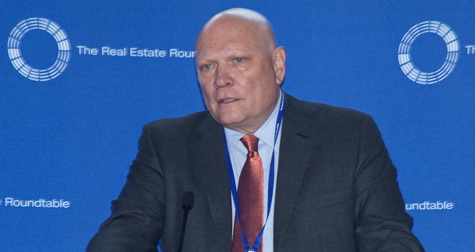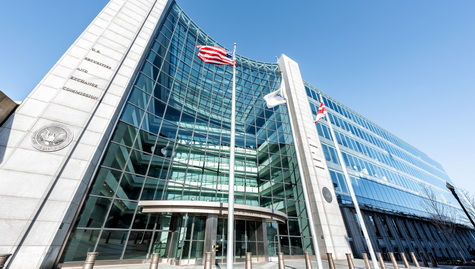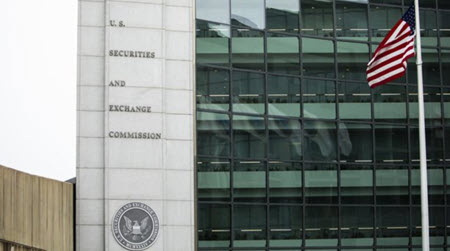Trends in real estate capital and credit markets were the focus of a joint session of The Roundtable’s Real Estate Capital Policy Advisory Committee (RECPAC) and Research Committee on Jan. 24 during RER’s State of the Industry Meeting in Washington.
Market Reports

- Research Committee Co-Chairs Paula Campbell Roberts (KKR), above left, and Spencer Levy (CBRE), right, led a discussion on market conditions and the economic outlook. Their findings suggest that the industry is facing challenges from shifting property fundamentals, rising rates, upward pressure on cap rates, and contracting credit capacity. (Download the slide presentation)
- Other recent reports support the RECPAC-Research presentation, including one from CoStar that shows tightening credit conditions in the sector. “The office market is showing signs of weakness due to weak demand, driving higher vacancy rates and deteriorating operating performance, as well as challenging economic and capital market conditions,” said Mike Santomassimo, chief financial officer of Wells Fargo. He added that the bank is “… making sure we’re being proactive with our borrowers to make sure we’re thinking way ahead of any maturities or extensions, options that need to get put in place to help manage through it.” (CoStar, Jan. 18)
- A report from Moody’s Analytics suggests that approximately $17 billion worth of mortgage bonds backed by office assets will come due in 2023, compared to $7 billion in 2022 and $4 billion in 2021. Victor Calanog, Moody’s head of commercial real estate economics told The Business Journals that the key issue for today’s office inventory is demand, due to the long-term effect of remote work and initiatives to increase adaptive use. (Washington Business Journal, Jan. 18)
- The office paradigm shift is analyzed in a market risk assessment study of 11 metropolitan statistical areas released yesterday by Trepp and Compstak. Their findings show that a total of $40.7 billion in loans are scheduled to mature by the end of 2024. In addition to loan statistics, the report reviews leasing trends and headwinds. (Trepp/Compstak, Feb. 2)
CRE’s Economic Contribution
- NAIOP, the Commercial Real Estate Development Association, released a research study on Jan. 26 on the Economic Impacts of Commercial Real Estate for 2022.
- The report analyzes the combined economic contributions of new commercial building development and the operations of existing commercial buildings in 2022. The NAIOP Research Foundation publication positive impacts on the U.S. economy, including:
- $2.3 trillion to U.S. gross domestic product (GDP)
- $831.8 billion in personal earnings
- 15.1 million jobs
Economic Impacts of Commercial Real Estate is authored by Brian Lewandowski, Adam Illig, Michael P. Kercheval, Ph.D., and Richard Wobbekind, Ph.D., at the University of Colorado Boulder Leeds School of Business.
# # #














